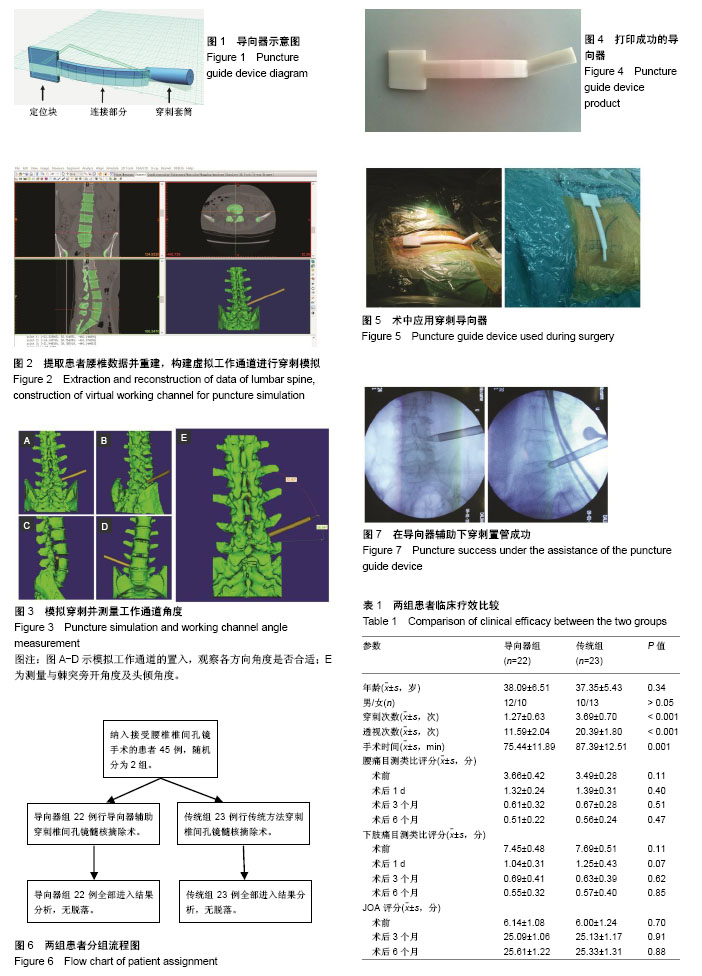| [1] Khoo LT, Fessler RG. Microendoscopic decompressive laminotomy for the treatment of lumbar stenosis. Neurosurgery. 2002;51 (5 Suppl):146-154.[2] Hou TY, Zhou Q, Dai F, et al. Repeated microendoscopic discectomy for recurrent lumbar disk herniation. Clinics (Sao Paulo). 2015;70(2):120-125. [3] Yeung AT. Minimally invasive disc surgery with the Yeung Endoscopic Spine System (YESS). Surg Technol Int. 1999;8: 267-277.[4] Ruetten S, Komp M, Merk H, et al. Use of newly developed instruments and endoscopes: full-endoscopic resection of lumbar disc herniations via the interlaminar and lateral transforaminal approach. J Neurosurg Spine. 2007;6(6): 521-530.[5] Hoogland T, Schubert M, Miklitz B, et al. Transforaminal posterolateral endoscopic discectomy with or without the combination of a lowdose chymopapain: a prospective randomized study in 280 consecutive cases. Spine. 2006; 31(24): E890-897.[6] Tonosu J, Oshima Y, Shiboi R, et al. Consideration of proper operative route for interlaminar approach for percutaneous endoscopic lumbar discectomy. J Spine Surg. 2016;2(4): 281-288. [7] Gore S, Yeung A. The “inside out” transforaminal technique to treat lumbar spinal pain in an awake and aware patient under local anesthesia: results and a review of the literature. Int J Spine Surg. 2014; 8: 28. [8] 周旭,贺石生,张海龙,等.新型腰椎经皮椎弓根螺钉植入定位方法及其对放射暴露剂量的影响[J].中华骨科杂志, 2014,34(3): 265-272.[9] Hsu HT, Chang SJ, Yang SS, et al. Learning curve of full-endoscopic lumbar discectomy. Eur Spine J. 2013;22(4): 727-733.[10] Yue JJ, Long W. Full endoscopic spinal surgery techniques: advancements, indications, and outcomes. Int J Spine Surg. 2015; 9:17.[11] 范国鑫,扶青松,顾广飞,等.脊柱微创手术的辐射危害及其防护进展[J].中国脊柱脊髓杂志,2014,24(3): 275-278.[12] Yu E, Khan SN. Does less invasive spine surgery result in increased radiation exposure? A systematic review. Clin Orthop Relat Res. 2014; 472(6): 1738-1748. [13] Yang J, Cai H, Lv J, et al. In vivo study of a self-stabilizing artificial vertebral body fabricated by electron beam melting. Spine. 2014;39 (8): E486-E492.[14] Hoang D, Perrault D, Stevanovic M, et al. Surgical applications of three-dimensional printing: a review of the current literature & how to get started. Ann Transl Med. 2016;4(23): 456.[15] AlAli AB, Griffin MF, Butler PE. Three-Dimensional Printing Surgical Applications. Eplasty. 2015; 15: e37.[16] 白一冰,徐岭,赵文亮,等.经皮腰椎间孔镜手术的穿刺定位策略[J]. 中国微创外科杂志,2012,12(6): 540-543.[17] Pa Z, Ha Y, Yi S, et al. Efficacy of transforaminal endoscopic spine system (TESSYS) technique in treating lumbar disc herniation. Med Sci Monit. 2016; 22: 530-539. [18] Zeng Y, Bao J, Su J, et al. Novel targeted puncture technique for percutaneous transforaminal endoscopic lumbar discectomy reduces X-ray exposure. Exp Ther Med. 2017; 14(4): 2960-2968.[19] 曹正霖,禤天航,于淼,等.自制辅助定位穿刺装置在经皮椎间孔镜下髓核摘除术中的应用效果[J]. 广西医学, 2017,39(9): 1320-1324.[20] 顾昕,贺石生,张海龙,等.经皮后外侧腰椎间孔入路椎间盘工作区域的解剖学研究[J].中华骨科杂志, 2011, 31(10): 1033-1037.[21] Fan G, He S, Chen Z. Musculoskeletal pain and cancer risk of staff working with fluoroscopically guided procedures. J Am Coll Cardiol. 2015;66(6): 759-760.[22] 范国鑫,吴信波,管晓菲,等.经椎间孔内镜技术穿刺路径辅助定位器的设计与临床应用[J].中国脊柱脊髓杂志, 2016,26(3): 218-224.[23] 李正宇.经皮腰椎椎间孔穿刺定位系统及临床应用研究[D].泸州医学院, 2012.[24] 陈天良.经皮腰椎椎间孔镜定位穿刺器研制及临床应用[D].广州中医药大学, 2014.[25] Wu AM, Shao ZX, Wang JS, et al. The accuracy of a method for printing three-dimensional spinal models. PLoS One. 2015; 10(4): e0124291. [26] Wang YT, Yang XJ, Yan B,et al. Clinical application of three-dimensional printing in the personalized treatment of complex spinal disorders. Chin J Traumatol. 2016;19(1): 31-34.[27] Yang L, Shang XW, Fan JN,et al. Application of 3D printing in the surgical planning of trimalleolar fracture and doctor-patient communication. Biomed Res Int. 2016; 2016: 2482086.[28] Chen H, Wu D, Yang H, et al. Clinical use of 3D printing guide plate in posterior lumbar pedicle screw fixation. Med Sci Monit. 2015;21: 3948-3954.[29] Kaneyama S, Sugawara T, Sumi M. Safe and accurate midcervical pedicle screw insertion procedure with the patient-specific screw guide template system. Spine (Phila Pa 1976). 2015;40(6): E341-348.[30] Ma L, Zhou Y, Zhu Y, et al. 3D-printed guiding templates for improved osteosarcoma resection. Sci Rep. 2016; 6: 23335. [31] Zein NN, Hanouneh IA, Bishop PD, et al. Three dimensional print of a liver for preoperative planning in living donor liver transplantation. Liver Transpl. 2013; 19: 1304-1310.[32] Tam MD, Laycock SD, Bell D, et al. 3-D printout of a DICOM fle to aid surgical planning in a 6 year old patient with a large scapular osteochondroma complicating congenital diaphyseal aclasia. J Radiol Case Rep. 2012; 6: 31-37.[33] Bernhard JC, Isotani S, Matsugasumi T, et al. Personalized 3D printed model of kidney and tumor anatomy: a useful tool for patient education. World J Urol. 2016; 34: 337-345.[34] Engel M, Hoffmann J, Castrillon-Oberndorfer G, et al. The value of three-dimensional printing modelling for surgical correction of orbital hypertelorism. Oral Maxillofac Surg. 2015;19:91-95.[35] Fan G, Fu Q, Zhang H, et al. Direct-beam radiation exposure to surgeons during pinning of supracondylar humerus fractures. J Pediatr Orthop. 2015;35 (4): e37.[36] Narain AS, Hijji FY, Yom KH, et al. Radiation exposure and reduction in the operating room: Perspectives and future directions in spine surgery. World J Orthop. 2017;8(7): 524-530. [37] Tatsumi RL. Radiation exposure during the lateral lumbar interbody fusion procedure and techniques to reduce radiation dosage. Int J Spine Surg. 2012; 6:195-199. [38] Moses ZB, Mayer RR, Strickland BA, et al. Neuronavigation in minimally invasive spine surgery. Neurosurg Focus. 2013; 35(2): E12.[39] Torres J, James AR, Alimi M, et al. Screw Placement Accuracy for Minimally Invasive Transforaminal Lumbar Interbody Fusion Surgery: A Study on 3-D Neuronavigation-Guided Surgery. Global Spine J. 2012;2(3):143-152. [40] Abdullah KG, Bishop FS, Lubelski D, et al. Radiation exposure to the spine surgeon in lumbar and thoracolumbar fusions with the use of an intraoperative computed tomographic 3-dimensional imaging system. Spine. 2012; 37(17): E1074-1078. |
.jpg)


.jpg)